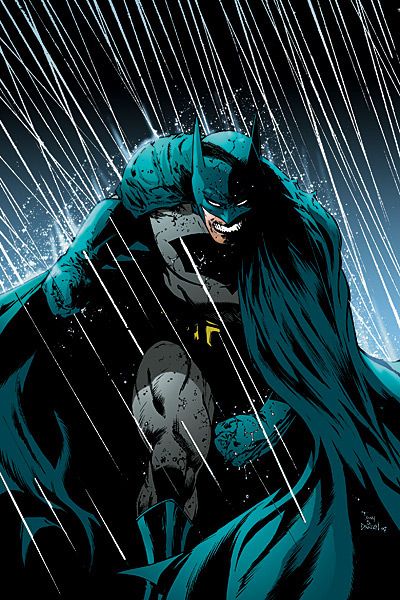Grant Morrison's "Batman" has walked a fine line between standard Batman tropes and Morrison's personal obsessions. His Batman works best when the two overlap, like in the "Club of Heroes" arc, which combined some of the sillier aspects of Batman's past with Morrison's own predisposition for doubling and inversion. That arc also worked extremely well because of the gorgeous artwork of J. H. Williams III, and gorgeous art has been rare during Morrison's tenure on this series. Usually, Morrison is paired with artists (Andy Kubert, Tony Daniel, Ryan Benjamin) who employ a scratchy, 1990s-style line and chiseled anatomy. Such relatively innocuous illustrations -- pages that would be right at home in any generic action comic -- counteract Morrison's more subversive ideas in this series. You might be mistaken for thinking that his "Batman" is relatively conventional, since it looks that way on the surface, but Morrison's work here is substantial. He's not phoning it in. He's creating a layered story of Batman's mania, and this issue is just one small piece in the larger puzzle.
One of the things Morrison does here is to help guide the reader to look at the big picture. In "Batman" #675, a new Ten-Eyed Man appears. The original Ten-Eyed Man was a late Silver Age creation killed off in "Crisis on Infinite Earths." Morrison himself brought the Silver Age Ten-Eyed Man back for a cameo appearance in his first series for DC: "Animal Man," in the late 1980s. It's no surprise that Morrison would return yet again to the Ten-Eyed Man. The motif of the all-powerful eye is something that's appeared in his work from "Zenith" through "Doom Patrol" and "Flex Mentallo." And the new Ten-Eyed Man also points back to some of Morrison's most recent work: in "52" #30, Bruce Wayne visited the Ten-Eyed Surgeons of the Empty Quarter who "sliced" out his demons. "Batman is gone," says Bruce Wayne in that issue of "52."
As Robin says in "Batman" #675, "you don't just undergo a death and rebirth experience without consequences, do you?" And that link between Morrison's current "Batman" run and the events shown in "52," show remind us that what Morrison is doing here is showing us an emotionally unstable Batman. A Bruce Wayne who failed to purge his demons, and has been more and more incapable of separating the Bruce Wayne persona from the Batman persona. That's why Morrison has gone out of his way to show Bruce Wayne in James Bond mode, parachuting into danger. That's why he's hallucinating about Bat-Mite and alien landscapes.
Morrison's Batman is a madman, not in the fascist Frank Miller way so often replicated in the post-"Dark Knight Returns" days, but in the way of a man whose already damaged psyche becomes fractured beyond all reason. If Batman has lived through every single story ever presented in a Batman comic, as Morrison posits he has, how can he not go mad?
With "Batman" #675, spurred to violence by the new Ten-Eyed Man -- an outcast from the same tribe we saw in "52" -- Bruce Wayne, out of costume, lashes out. It's the beginning of the end for both Batman and Bruce Wayne, it seems. The two personas have blended so irrevocably that the shadowy, hunched Wayne has the silhouette of his caped counterpart.
This issue might be considered a prologue to the upcoming "Batman R.I.P." storyline, but, in fact, every Morrison Batman story since "52" #30 has been the prologue. It's all a single story, with clues to the larger picture planted along the way. Have you been paying attention the whole time?

